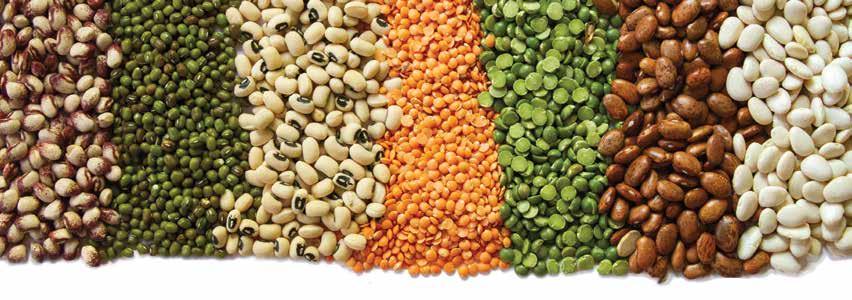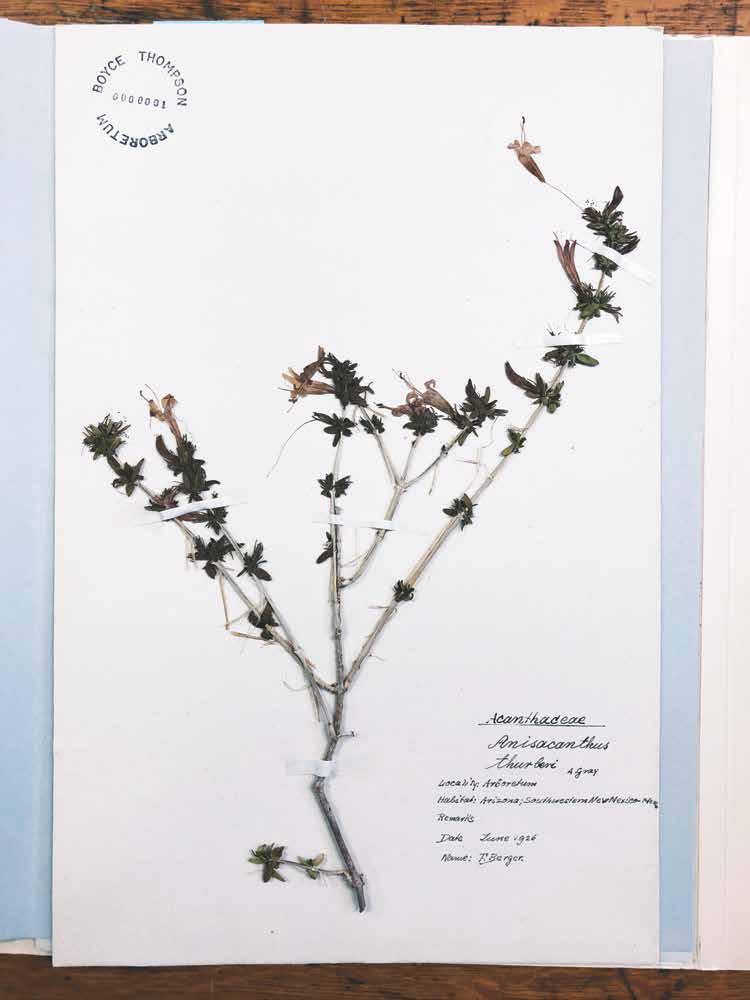
5 minute read
Why Should You Give a Hill o’ Beans About Legumes?
Text from educational exhibits of the Taylor Family Desert Legume Garden here at Boyce Thompson Arboretum with additional content by -Matthew B. Johnson
The legume family is one of the most economically and agriculturally important plant families in the world. It is, in fact, the third largest family of flowering plants with over 18,000 species. Legumes are a major component of ecosystems worldwide including the Sonoran Desert. As a food source, legumes are second in economic importance only to the Grass Family (wheat, corn, rice, etc.)
Advertisement
Uses of Legumes:
1. Food: Legumes are a major source of dietary protein. The leaves, pods and/or seeds of many are eaten fresh or cooked. Examples are Beans, Peas, Peanuts, Carob, Fenugreek, and, Licorice.
2. Ornamentals: Within this diverse family are trees, shrubs, annual and perennial herbs and vines valued for their beauty and usefulness in landscaping. Examples are Wisteria, Mimosa, and Redbud.
3. Medicines: Plants are living chemical factories. 80% of our medicines today originate from plants. Legumes are also used in many traditional medicines. Examples are Senna, Cancer Bush, and, Kidneywood.
4. Industry: Legumes provide many chemicals essential to industry for dyes, tannins, gums, oils, etc. Tree legumes are often used for timber and fuel. Examples are Indigo, Mesquite, and Sweet Acacia.
5. Fodder: The foliage and pods of many legumes are eaten fresh or dried as hay for livestock. They also provide valuable forage for wildlife. Examples are Alfalfa, Vetch, and Clover.

Food
Why do so many people eat beans? Legumes are a major food source for many cultures throughout the world. They provide sugars, carbohydrates, vitamins, minerals, fiber and flavoring, as well as protein. Soybeans are composed of 38% protein, whereas steak contains only 25% protein – and beans are much cheaper to produce than meat.
Beans are a great source of protein. Roots provide many untapped riches. Pods are crammed with carbohydrates and sugars. Sprouts are rich in rare vitamins, minerals, and trace elements. Gums are used to stabilize and thicken many foods. Flowers produce pollen and nectar.
Ornamentals
Why do artists and landscapers love legumes? For their many beautiful forms, textures and colors! The Legume family contains more than 18,000 species worldwide. It is so diverse that botanists divide it into six subfamilies, for example, blue palo verde, baja fairy duster, and sweet pea. If legumes are so diverse, what do they have in common? Most legumes produce fruits (pods) that split open along two sides.
Medicine
How do legumes affect your health? Plants are living chemical factories. Most traditional medicines and more than 50% of all prescription medicines originated from plants. Many legumes can enhance your well-being and can be used to treat disorders and diseases:
Circulatory & endocrine systems - Soybeans, Glycine max, can lower cholesterol, increase hormone levels and regulate insulin. Fenugreek, Trigonella foenum-graecum, can lower cholesterol and is used in treating diabetes.
Digestive System - The leaves, twigs, and gum of Velvet Mesquite, Prosopis velutina, are used to treat ulcers & stomach inflammation.
Immune system - The traditional Chinese herb, Astragalus membranaceus, enhances immune system function.
Skin & Respiratory System - Tea made from the twigs and leaves of Red Bird-of-Paradise, Caesalpinia pulcherrima, is used to treat dermatitis and respiratory infections.
Nervous System - L-dopa, originally identified in Fava Beans, Vicia faba, is used to treat Parkinson’s disease.
Antibiotics - Kidneywood, Eysenhardtia texana, has antifungal and antibacterial properties.
Cancer Bush, Sutherlandia frutescens, has been used in Africa as a traditional treatment for cancer.
Industry
What legume gave us the blue in blue jeans? Before the development of aniline dyes, a major industry produced indigo from leaves of Indigofera. The leaves are soaked in water in large earthenware pots or pits in the ground. As the indigo leaves rot, a blue color is released. After several days of fermentation, lime paste is mixed in. The blue paste that settles is collected and can be stored for many years.
What are some of the uses of legumes? Essential oils are used to make perfumes. Gums are used to make foods, cosmetics, inks, polishes and drugs. Fine woods are used to make musical instruments, sculptures and furniture. Tannins are used to make leather. Fibers are used to make ropes & textiles. Woods are used for fuel and to make charcoal.
Fodder
Alfalfa is an important forage crop that covers more than 20 million acres in the United States. Because alfalfa contains 20% protein, it is an excellent food for livestock. Legumes actually enrich the soil they grow in!
Nitrogen is an essential nutrient for plants. Although the atmosphere contains a lot of nitrogen, it is not a form that can be absorbed by plants.
About three-quarters of all legumes have special root nodules where bacteria live. These bacteria trans form atmospheric nitrogen into a form that the plants can use. The bacteria get a place to live as well as some nutrients from the plants, and the legumes get this essential fertilizer.

To learn more, come visit the Boyce Thompson Arboretum’s Taylor Family Desert Legume Garden, a living collection of Arid Land Legumes & Educational Exhibits.
The construction of the Taylor Family Desert Legume Garden at the Boyce Thompson Arboretum was funded by the family of the late Keith Taylor, Sr. and contributions from the green industry in Arizona. The purpose of the garden is to demonstrate to the public the diversity and utility of legumes drawn from deserts around the world.
The garden provides educational exhibits showing the existing and potential utility of desert legumes as food crops, forage crops, sources of industrial products, medicinal products, fuel crops, ornamental plants, sources of nitrogen, and cover crops for soil stabilization and improvement. The Desert Legume Garden also provides illustrations as to the importance of wild desert legumes as a source of genes for existing domesticated legumes.
From the Herbarium: The First Collected Specimen from Boyce Thompson Arboretum

First Collected Specimen from Boyce Thompson Arboretum
Work on the BTA Herbarium collection began in 1926. The first accessioned specimen (# 0000001) is a beautifully pressed and mounted specimen of desert honeysuckle, Anisacanthus thurberi. This specimen was collected on the Arboretum grounds by Fritz Berger in June of 1926. Desert honeysuckle is a locally common native shrub along Queen Creek. Even after 92 years, this first specimen appears as if it could have been collected and pressed only months ago.
In the fall of 2017, the Boyce Thompson Arboretum Herbarium was relocated to Tucson where it is currently managed by the Desert Legume Program. There is not adequate space for this collection of dried plant specimens at BTA’s current facilities, and it had not been actively curated for many years. The BTA Herbarium will eventually include preserved specimens of all plant accessions in BTA’s living collection as well as specimens documenting the flora of east central Arizona. Long term plans call for the construction of facilities at the Arboretum to house this important collection.










